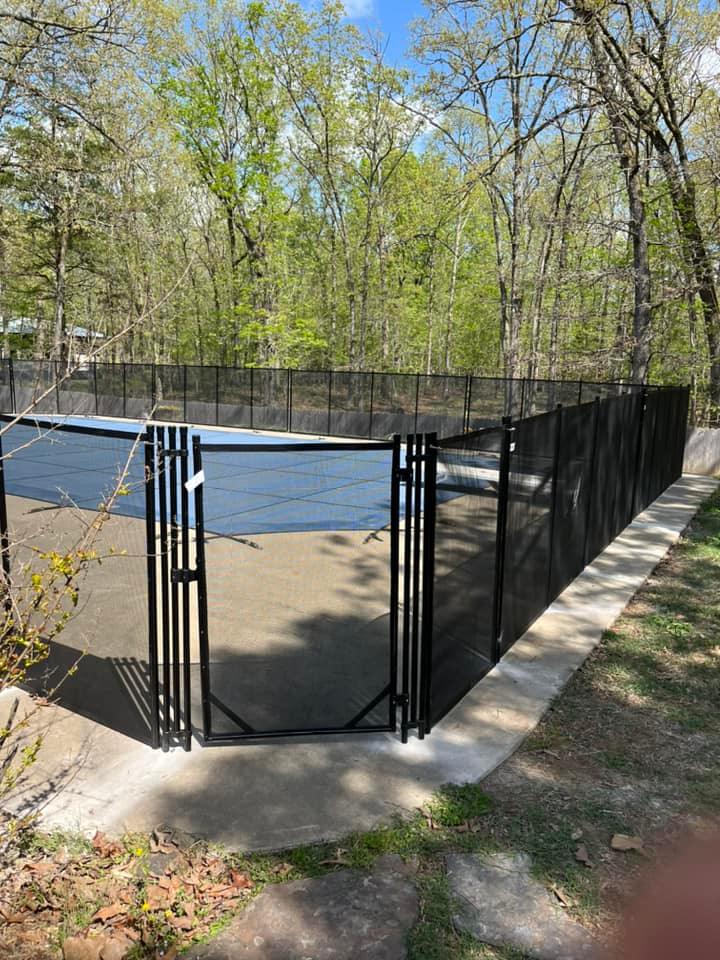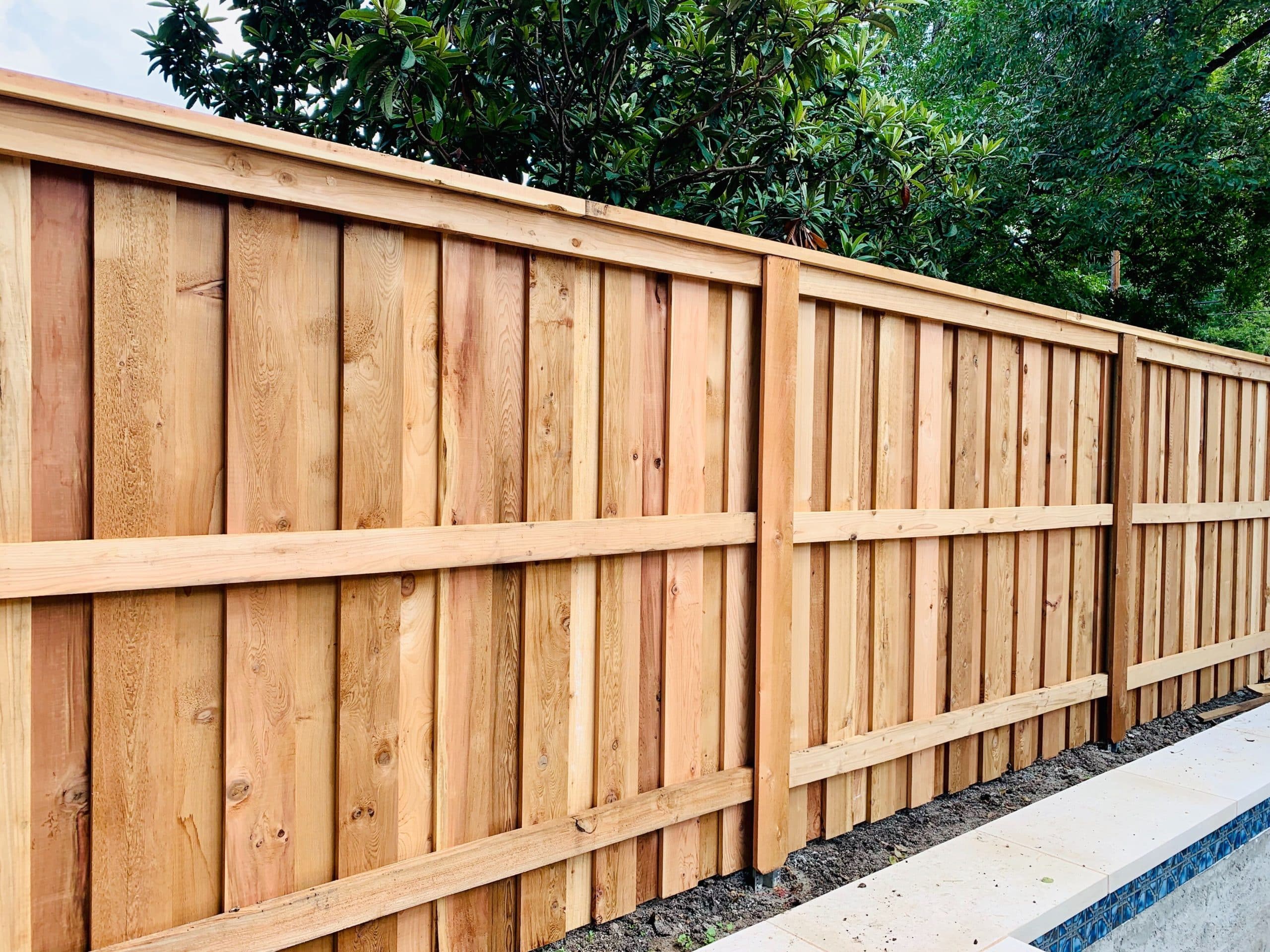High-Quality Wood Fences Fort Smith AR: Secure Your Property with Professional Installation
High-Quality Wood Fences Fort Smith AR: Secure Your Property with Professional Installation
Blog Article
Step-by-Step Overview to Mounting a Timber Fence for Your Home or Residential Property
Setting up a wood fence can dramatically improve both the capability and aesthetic appeal of your property. Comprehending these actions not just guarantees a durable setup yet also contributes to long-term contentment.
Planning Your Fence Installation
When starting the setup of a wood fencing, careful planning is essential to guarantee a successful result. Begin by examining the function of the fence-- whether it is for privacy, security, or visual appeals-- because this will influence the style and format. Next off, examine the home lines, taking care to confirm the borders with a survey or title deed to prevent disputes with neighbors.
Take into consideration regional zoning homeowners and legislations' organization standards, as these might dictate fence height, design, and products. It is a good idea to get the essential licenses before commencing job, as this can stop legal difficulties later on.
Additionally, consider the terrain and soil problems of your building. Irregular ground might need added adjustments during setup, while rough soil may necessitate customized devices.
Lastly, produce an in-depth plan that consists of measurements, the number of blog posts, and the spacing between them. A clear format will assist in the installment process and ensure that you have all called for materials accessible. By adhering to these preparation actions, you can establish a strong structure for an effective wood fence setup.
Picking the Right Products
Selecting the appropriate materials for your timber fencing is critical to making sure durability and visual appeal. The most common types of wood used for secure fencing consist of cedar, redwood, and pressure-treated ache.
Pressure-treated pine is another preferred alternative, as it is often a lot more cost effective. Nonetheless, it calls for normal maintenance and therapy to extend its lifespan. When choosing timber, take into consideration the climate of your region; as an example, areas with high humidity might gain from timber varieties with higher resistance to moisture.
In addition, you ought to examine the fence design and purpose. A picket fence may call for different product specs contrasted to a personal privacy fence. Choose thicker boards for structural integrity, especially in high-wind locations. Consider the finish; unattended wood may call for staining or securing to safeguard against weather components. By carefully selecting your products, you can guarantee that your timber fence will stand the test of time while enhancing your home's landscape.
Preparing the Installation Website

Preparing the installation site is a vital action in guaranteeing the effective building and construction of your timber fence. Correct prep work not only helps with a smoother setup process however also adds to the longevity and stability of the fence.

If your website has irregular ground, take into consideration leveling it or readjusting your fencing layout appropriately. This is essential to stop damages during installment and make certain security.
Setting Up the Fence Articles

Following, dig openings for each article, guaranteeing they are deep sufficient-- usually one-third the elevation of the article above ground-- to give security. A depth of at the very least 2 feet is recommended for a lot of fencings. The size of the holes must be approximately three times the size of the blog posts.
When your openings are all set, area each post upright right into the assigned hole. Utilize a This Site degree to guarantee they are plumb, adjusting as essential. After positioning, fill the openings with concrete mix or jam-packed soil for added support. Permit the concrete to heal based on the producer's instructions, typically 24 to 2 days. Properly installed messages are important for keeping the structural integrity of the fence, ensuring it continues to be upright and secure against ecological stresses.

Adding Fencing Panels and Completing Touches
Once the fence messages are firmly established, the next step entails attaching the fencing panels, which will define the boundaries of your home. Begin by placing each panel between the messages, guaranteeing they are degree and straightened. Use a level device to check that the panels are directly; this will certainly guarantee a professional coating. For optimal stability, secure each panel to the blog posts using galvanized screws or nails, which withstand rust and deterioration.
Besides panels are attached, inspect the entire fencing for any kind of imbalances or gaps. Make adjustments as necessary to make sure an uniform look. As soon as pleased with the placement, consider including completing touches. Sand any type of rough sides or surface areas to stop splinters and enhance aesthetics.
Furthermore, using a protective stain or sealant will boost the wood's resilience versus climate elements, lengthening the life of your fence. Select a shade that complements your home and landscape for a visually pleasing appearance. Lastly, inspect neighborhood guidelines for any type of needed upkeep or updates to make sure conformity with community criteria. With these actions, your timber fence will certainly not only offer its objective successfully yet also boost the overall allure of your residential property.
Conclusion
Finally, the successful installation of a wood fencing calls for careful preparation, option of ideal materials, detailed site preparation, and exact execution of setup techniques. Interest to detail during each stage guarantees architectural stability and aesthetic charm. By sticking to the detailed actions, residential or commercial property proprietors can enhance safety, personal privacy, and visual charm, ultimately adding to the total worth and functionality of the residential or commercial property. Proper upkeep post-installation additionally extends the life and appearance of the timber fence.
When beginning on the installation of a timber fence, careful preparation is important Check Out Your URL to make sure a successful end result.Choosing the appropriate products for your timber fencing is critical to making sure resilience and visual charm. A picket fencing might require different product specs contrasted to a privacy fence.With the installment site correctly prepared, the next step involves establishing the fencing posts, which serve as the foundation of your timber fence.As soon as the fence posts are securely set, the next step entails affixing the fencing panels, which will certainly specify the limits of your residential property.
Report this page